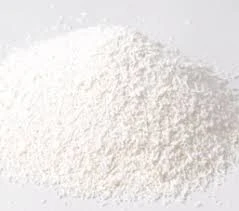
e140 food additive
Understanding E140 Food Additive A Closer Look at Chlorophylls
Food additives are substances added to food and beverage products to enhance their flavor, appearance, texture, and shelf-life. Among the myriad of food additives, the E140 additive stands out as a natural colorant. E140 refers specifically to the group of chlorophylls, which are pigments found in plants that play a crucial role in photosynthesis. This article delves into the properties, uses, and implications of using E140 in food products.
Chlorophylls, responsible for the green color in plants, can be derived from various sources, such as spinach, nettles, and other green vegetables. The extraction process usually involves the use of solvents to isolate the chlorophyll from the plant material. In the food industry, chlorophyll is primarily valued for its bright green hue, commonly used to color foods without the synthetic additives that often accompany artificial colors.
Understanding E140 Food Additive A Closer Look at Chlorophylls
E140 finds its application across a broad range of food products. It is commonly used in candies, beverages, dairy products, and baked goods. In the realm of beverages, green smoothies and juices often incorporate chlorophyll to enhance their visual appeal. In the confectionery sector, E140 is utilized to give candies their vibrant green color, thereby enticing consumers, particularly children, who are drawn to colorful products.
e140 food additive

Though E140 is favored for its natural origins and appeal, it is imperative to understand the effects and safety considerations associated with its use. The European Food Safety Authority (EFSA) has assessed chlorophyll and deemed it safe for consumption within the stipulated limits. As a naturally occurring compound, chlorophyll has been consumed in large quantities by people through green vegetables for centuries without significant adverse reactions. However, like any additive, it is essential for manufacturers to adhere to regulations on the amount used in food products to ensure safety.
Moreover, E140 possesses additional benefits beyond mere coloration. Chlorophyll is said to have antioxidant properties, which may contribute to a variety of health benefits. Although further research is needed to affirm these claims, the perception of chlorophyll as a health-promoting ingredient can enhance the overall marketability of food products that contain it.
While the benefits of E140 are apparent, it is also critical to be aware of the limitations. The stability of chlorophyll can be impacted by heat and light, potentially affecting the color vibrancy in processed foods. Therefore, manufacturers must optimize the formulation and processing conditions to preserve the quality of E140 in their products.
In conclusion, E140 food additive represents a fascinating intersection of natural ingredients and contemporary food science. Its natural origin, broad application, and potential health benefits make it a popular choice in the food industry today. As consumer preferences continue to evolve, additives like E140 will likely play an increasingly significant role in the development of healthier, more appealing food options. Understanding and utilizing such additives within safe limits is essential for manufacturers to meet consumer demand while ensuring public health. Thus, E140 stands as a testament to the growing importance of natural ingredients in our modern diet.
-
Buy High-Quality Trichloroisocyanuric Acid for Sale | TCCA 90% SupplierNewsAug.30,2025
-
Pure Sodium Dichloroisocyanurate Dihydrate | Powerful DisinfectantNewsAug.29,2025
-
Industrial Chemicals: Quality & Purity for Every IndustryNewsAug.28,2025
-
Nitrile Rubber Honoring Strict Production StandardsNewsAug.22,2025
-
Aspartame Ingredients Honoring Food Safety ValuesNewsAug.22,2025
-
Fertilizer for Balanced Plant NutritionNewsAug.22,2025
-
Cyanide Gold Processing with High Purity AdditivesNewsAug.22,2025
Hebei Tenger Chemical Technology Co., Ltd. focuses on the chemical industry and is committed to the export service of chemical raw materials.
-

view more DiethanolisopropanolamineIn the ever-growing field of chemical solutions, diethanolisopropanolamine (DEIPA) stands out as a versatile and important compound. Due to its unique chemical structure and properties, DEIPA is of interest to various industries including construction, personal care, and agriculture. -

view more TriisopropanolamineTriisopropanolamine (TIPA) alkanol amine substance, is a kind of alcohol amine compound with amino and alcohol hydroxyl, and because of its molecules contains both amino and hydroxyl. -

view more Tetramethyl Thiuram DisulfideTetramethyl thiuram disulfide, also known as TMTD, is a white to light-yellow powder with a distinct sulfur-like odor. It is soluble in organic solvents such as benzene, acetone, and ethyl acetate, making it highly versatile for use in different formulations. TMTD is known for its excellent vulcanization acceleration properties, which makes it a key ingredient in the production of rubber products. Additionally, it acts as an effective fungicide and bactericide, making it valuable in agricultural applications. Its high purity and stability ensure consistent performance, making it a preferred choice for manufacturers across various industries.





